
Where I grew up, black raspberries were the big summer fruit, though occasionally, red raspberries made an appearance. Imagine my surprise and delight about ten years ago when I discovered a huge planting of golden raspberries on my university campus. I was wearing a dress that day, but I didn’t care – I spent a solid hour among the prickly canes picking and eating yellow raspberries the size of the upper joint of my thumb.
There must have been a million tasty fruit snacks. It was glorious.
Golden raspberries are sweet, large, and easy to grow. And, unlike black raspberries, some yellow raspberry varieties give you two crops a year instead of one! Read on to learn more.
Read more by Rosefiend Cordell, horticulturist
Jump to:
What are Golden Raspberries?
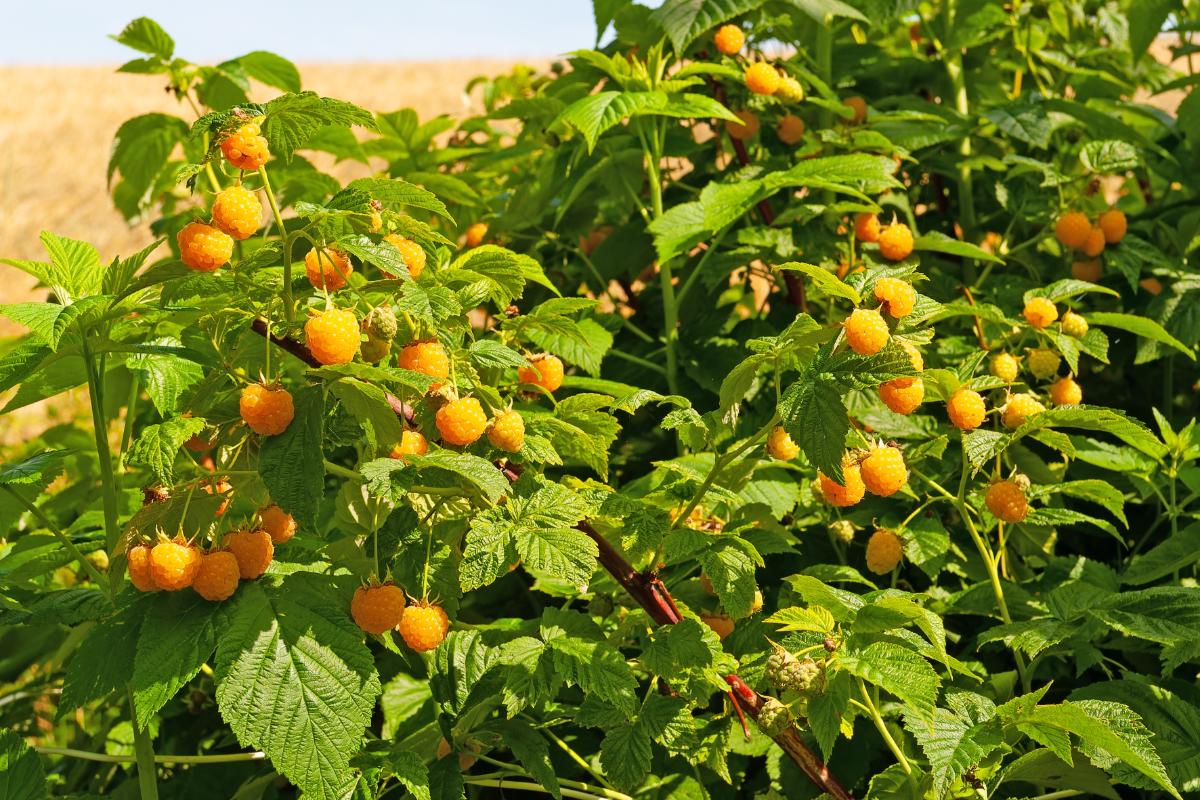
| Golden Raspberries | |
| Scientific name: | Rubus idaeus ssp. strigosus |
| Common names: | Yellow raspberries, heer, molte, cloudberry, hjortron |
| Form: | Shrub |
| Size: | Between 3 to 6’ tall |
| Sun or shade: | Full sun to part shade |
| Hardiness: | Ranges from zones 3 to 10 |
Red raspberries dominate the market, mainly because the ones you see at the grocery store were bred to stay fresh while being shipped long distances. Golden raspberries are too fragile for shipping, but they’re every bit as tasty. They’re actually red raspberries without anthocyanin in the fruit – the dark pigment that makes the berries red or purple. Their flavor is more mellow and sweeter than that of red raspberries, like little drops of sunshine.
Golden raspberries will vary in color. Some are champaign colored, some are dark yellow, some will have a little red blush or will be a rosé color.
Breeders have been creating new varieties of these yellow raspberries, selecting for bigger and sweeter fruits, increased disease resistance, and longer fruiting times. There are a lot of good yellow raspberry cultivars that will grow like weeds in your garden.
Learn more about edible gardening.
Types of Golden Raspberries

When it comes to yellow raspberries, you’ll likely see three kinds – summer bearing, fall bearing, and everbearing, which bear raspberries in both summer and fall.
It will take a few years for the raspberry plants to really come into their own. The rule of (green) thumb with plants is that it takes about three years for a plant to be fully established. You’ll still get berries off the plant in the first two years, but harvests might be inconsistent.
Fall berries are generally larger than spring or summer berries – definitely something to look forward to.
Golden Raspberry Varieties to Look For
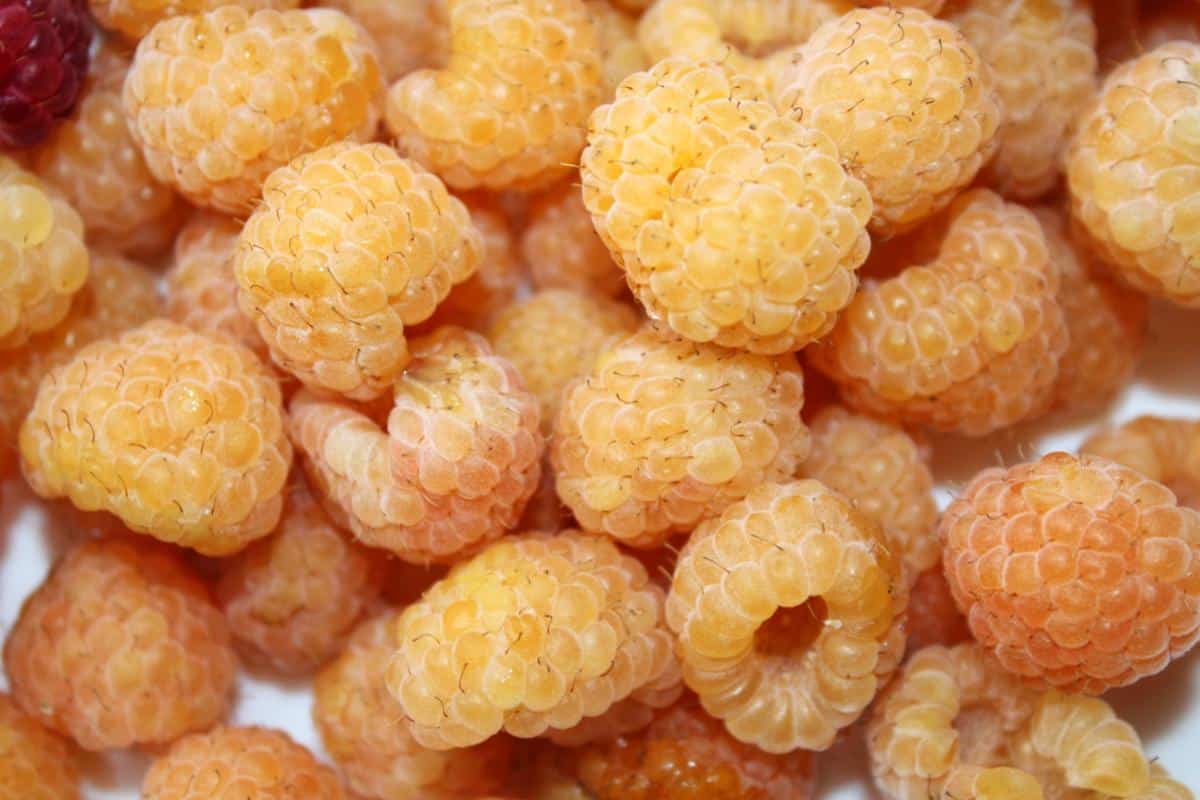
- ‘Fall Gold’ – Grows 4 feet tall, hardy in zones 3 to 8. This remarkable raspberry produces large berries in two crops each season, one in late summer to fall, then another in spring on the same canes. Don’t cut back the bearing canes until after the second harvest.
- ‘Kiwi Gold’ – An everbearing raspberry with firm, juicy berries. It bears two crops, one in early summer and then a second one in fall. Raspberries are a dark yellow. A great heirloom berry that is, unfortunately, difficult to find. Zones 4 to 8.
- ‘Cascade Gold’ – Grows 6 feet tall, hardy to zone 5. Bred for the unique weather of the Pacific Coast by Washington State and the USDA. ‘Cascade Gold’ raspberries will bear in spring a year after they’ve been planted. Plant with ‘Fall Gold’ for an extended harvest season. Hardy in zones 6 to 9.
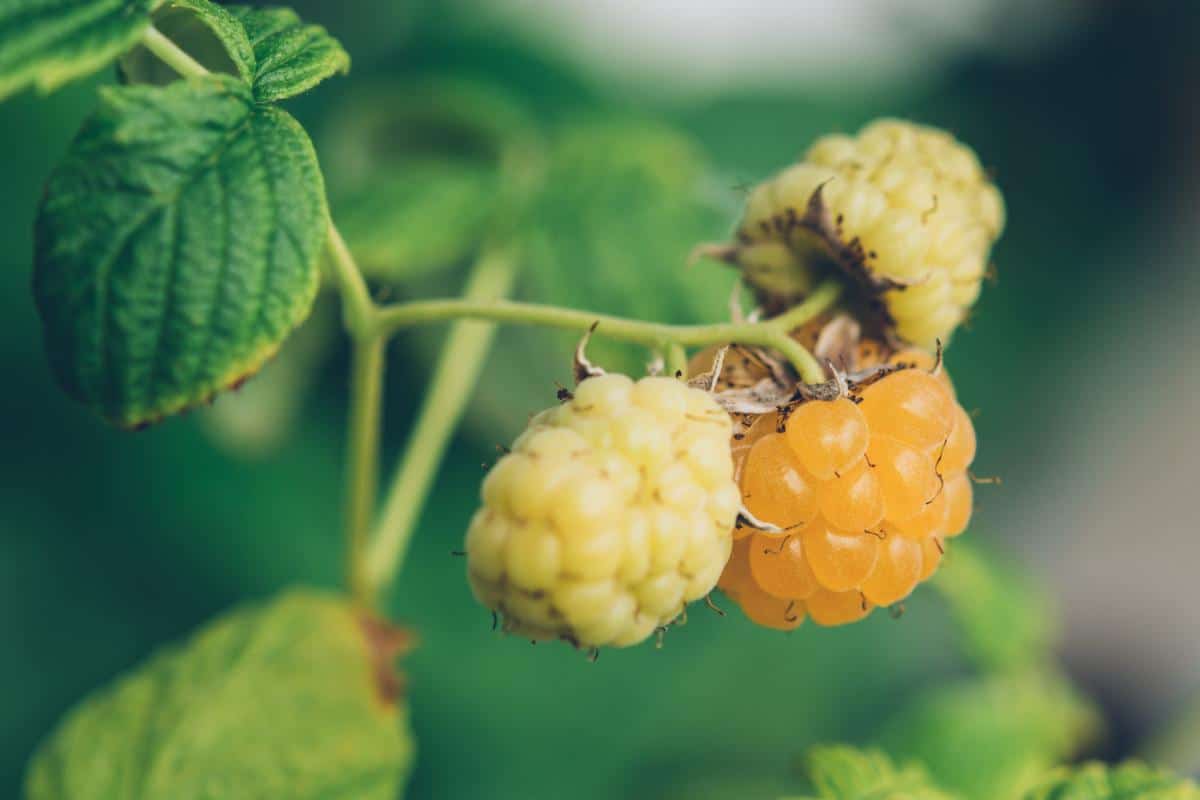
- ‘Anne’ – This sunny cultivar produces a sweet yellow berry that weighs 4 to 8 grams (most raspberries weigh 2 to 3 grams). It has great cold hardiness and grows well in temperate to cool climates. Anne is a firmer raspberry and holds up better than Fall Gold. Fewer seeds than other raspberries! Stake or trellis these to keep them from falling over from the weight of all its raspberries. Ripens in fall through frost. Zones 4 to 9.
- ‘Honey Queen’ – This hybrid golden raspberry was developed in Alberta for you northern dwellers! They are hardy to zone 3. These medium sized honey-colored raspberries have a sweet honey flavor and are very hardy. It’s a fast-growing golden raspberry that is more shade-tolerant than other raspberries. Berries ripen in summer. Zones 3 to 8.
- ‘Double Gold’ – A cone-shaped yellow raspberry that turns a rosy champagne color when ripe. You get two harvests from this variety! The first crop appears in the fall, and the second crop is borne on the same canes the next summer. Vigorous grower, disease-tolerant, and will sucker freely.
Cultural Requirements for Golden Raspberries

Note: Don’t plant gold, red, or purple raspberries with black raspberries. Black raspberries can easily catch viruses from other raspberry types, spread by aphid vectors. Plant them in a separate area about 75 to 100 feet away, if possible.
- Height and width: Raspberries vary in size depending on the specific variety, but most can grow about 5 feet tall and spread out several feet wide.
- Light: Raspberries prefer well-drained soil and full sun but can also tolerate partial shade, especially in hotter climates.
- Pests and diseases: Golden raspberries can be susceptible to aphids, Japanese beetles, spider mites, powdery mildew, and raspberry crown borer. Proper pruning and care can keep these issues to a minimum.
- Fertilizing: Top-dress with compost or organic fertilizer to encourage healthy growth and fruit production. Mulch lightly, as the canes are prone to rot in too much mulch. Cardboard mulch with straw on top works well.
- Pruning and propagation: These brambles benefit from regular pruning to remove old canes to promote new growth. Raspberries spread readily by tip layering and suckers and can be propagated by root and stem cuttings.
Fun Fact

Botanically, raspberries are not actually berries, even though they’re called berries. Raspberries are made up of many small drupes. A drupe is a fleshy fruit with a thin skin and a central stone that contains the seed – like a pear, peach, cherry, or olive. With raspberries, these drupes hold together in a hollow cone shape. Now, remember that for trivia night.
Conclusion
Golden raspberries are a good source of vitamins B and C, folic acid, copper, iron, antioxidants, and ellagic acid, a phenolic compound known to prevent cancer. They also have a high proportion of dietary fiber.
This is just all bonus knowledge, though. I now have a new raspberry patch consisting entirely of goldens, and I simply enjoy squeezing between thorny canes and putting raspberries in my face. That’s one of the best parts of summer.
Read More:

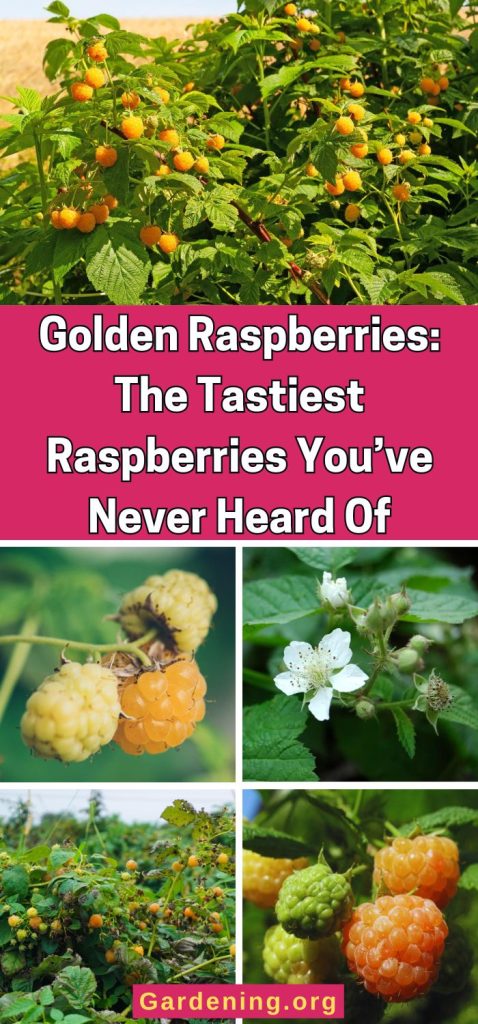
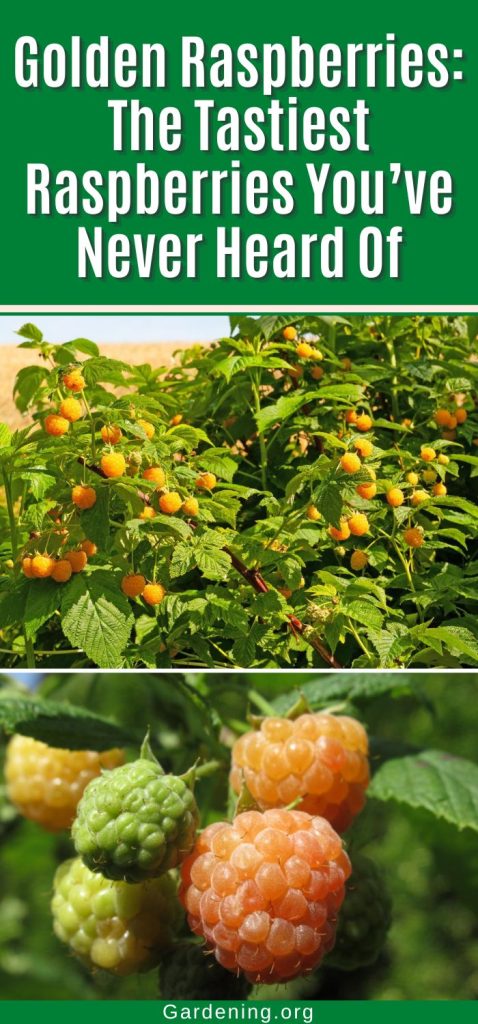
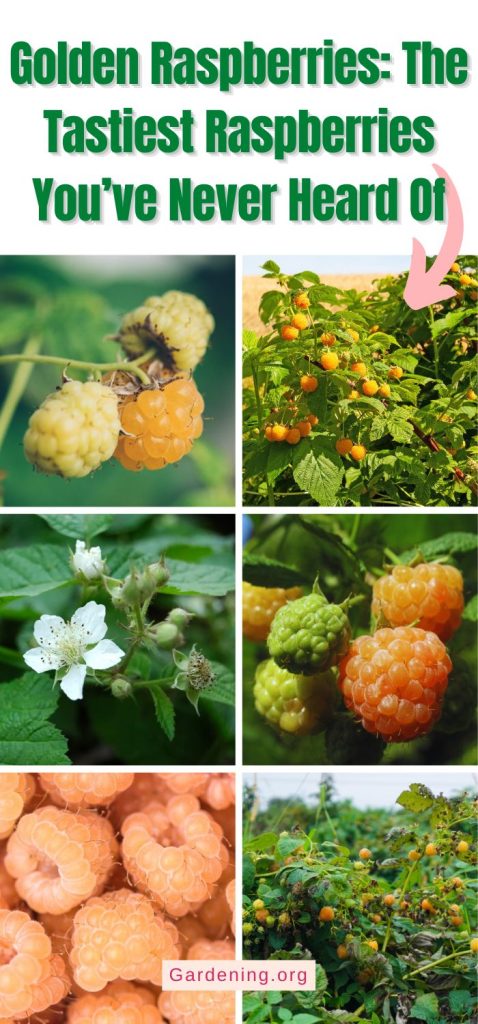
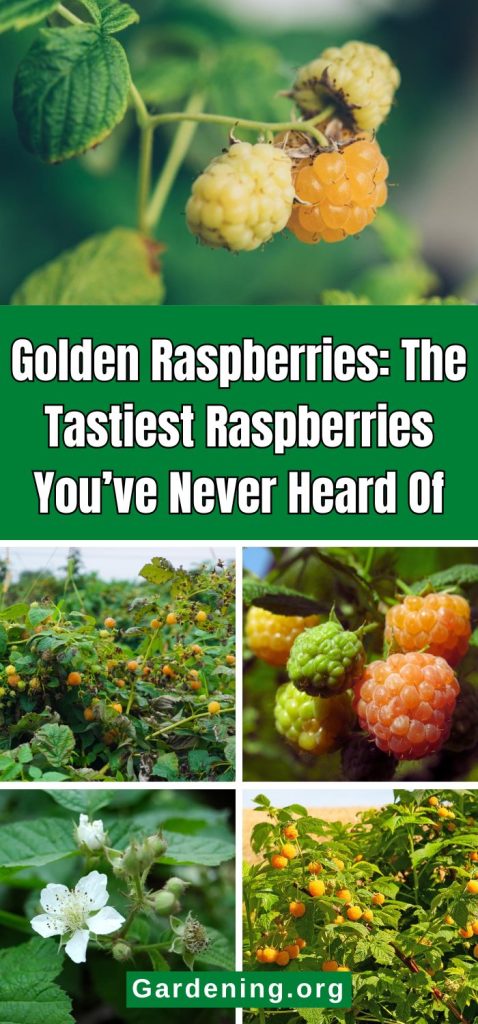

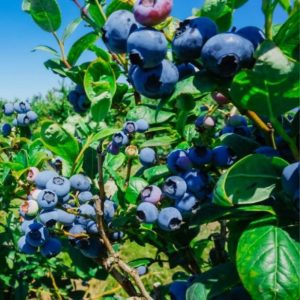

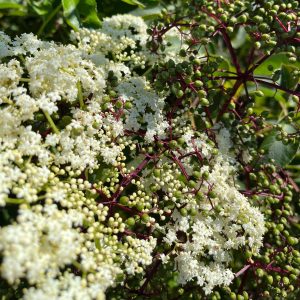
Leave a Reply